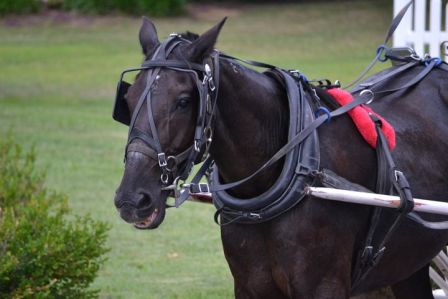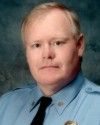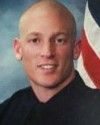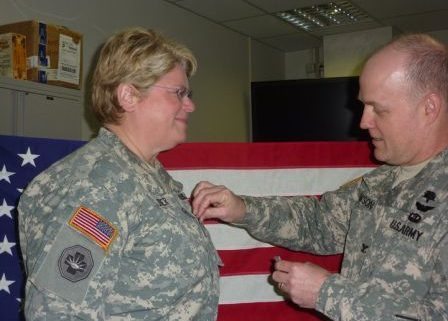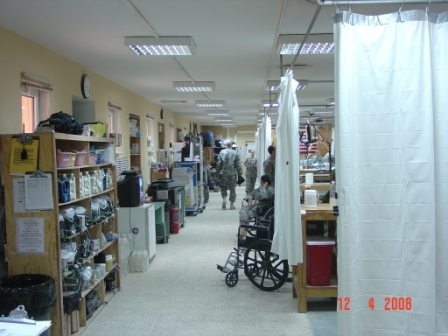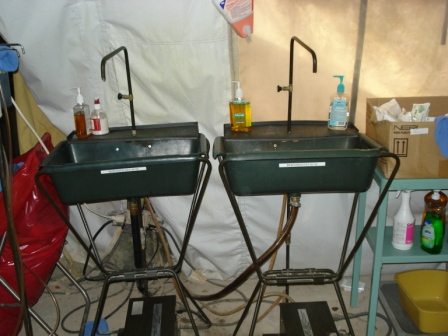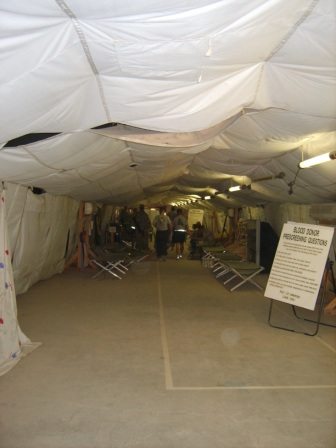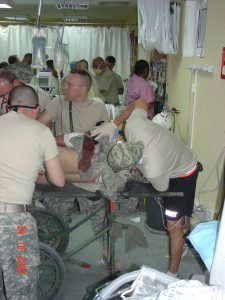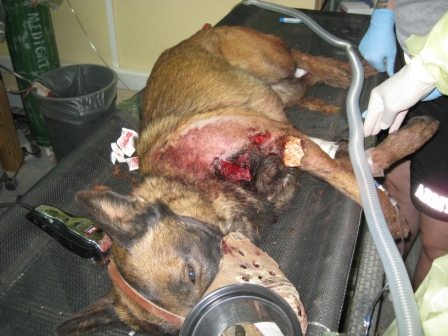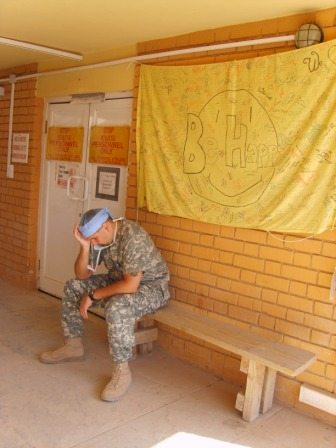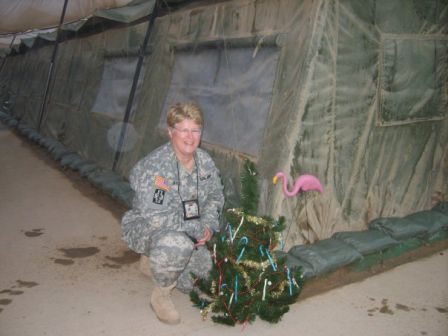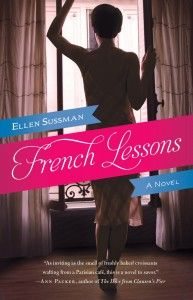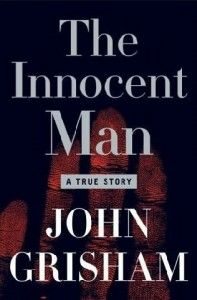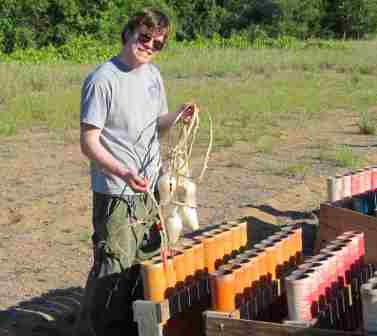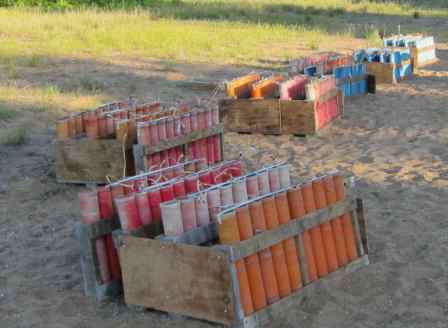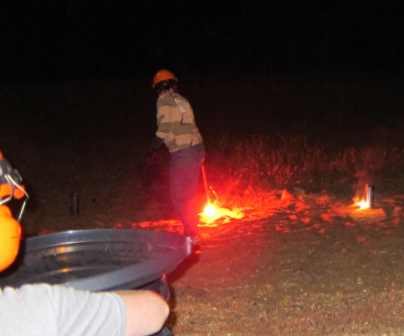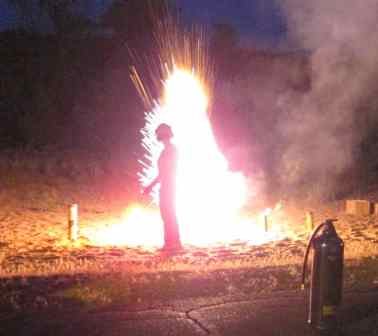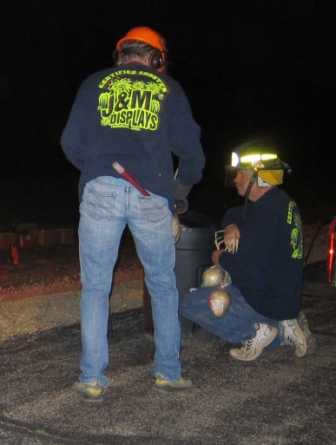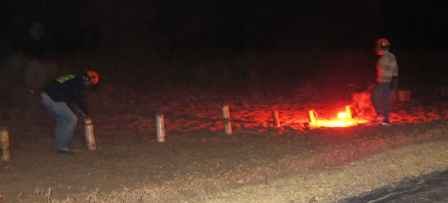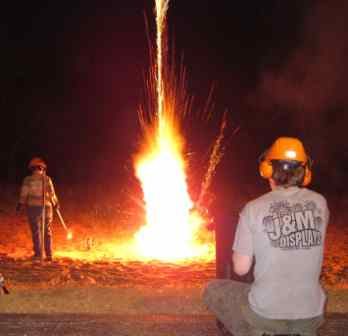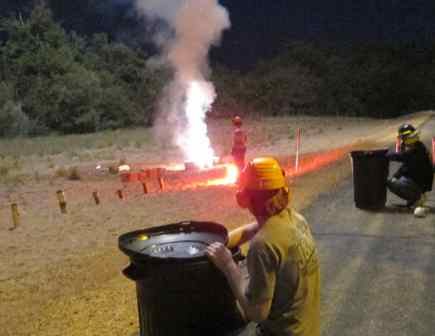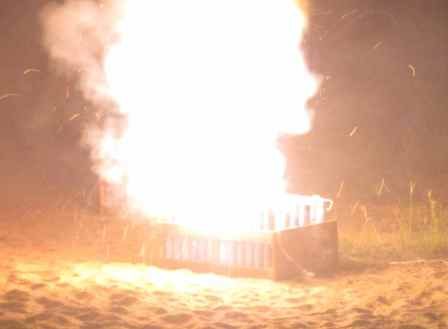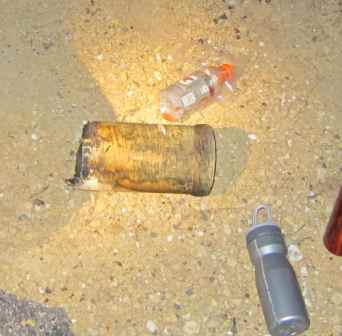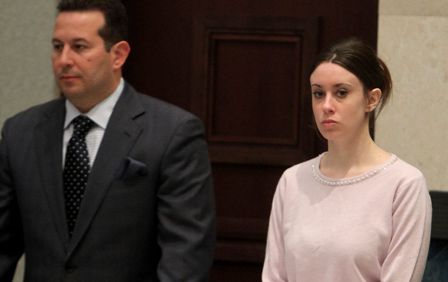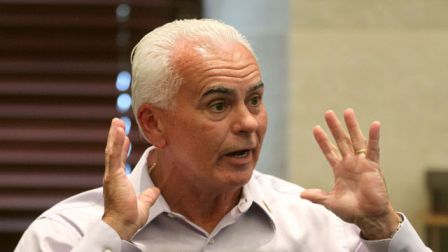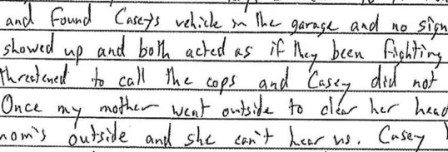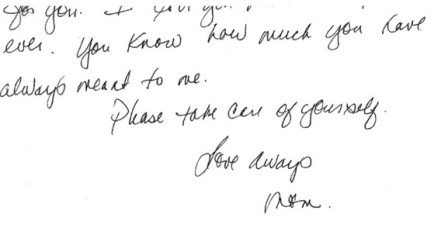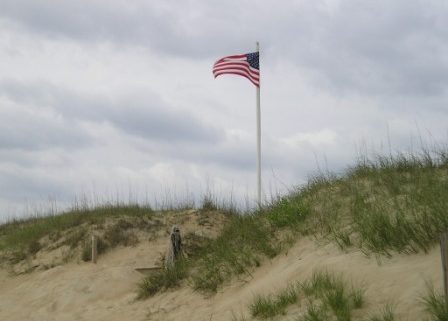The Graveyard Shift offers our condolences to the families of these brave officers.
Officer Bryan Mitchell Hebert, 36
Beaumont Texas Police Department
July 8, 2011 – Officer Bryan Hebert was killed when his patrol car was intentionally struck by another vehicle during a pursuit. He is survived by his parents.
Sergeant Steven Kenner, 57
Bismarck North Dakota Police Department
July 8, 2011 – Sergeant Steven Kenner was shot and killed after responding to the scene of a domestic disturbance involving a man who’d threatened a woman with a knife. When Sgt. Kenner and other officers found the suspect sitting in his van and asked him to show his hands, he immediately began firing his weapon.
Sgt. Kenner is survived by his wife and three children.
Officer Ryan Stringer, 26
Alhambra California Police Department
July 10, 2011 – Officer Ryan Stringer was killed in an automobile crash when his patrol car collided with another patrol car while responding to a robbery-in-progress call.
Officer Brent Long, 34
Terre Haute Indiana Police Department
July 11, 2011 – Officer Brent Long was shot and killed as he and other officers served a felony warrant in the home of a wanted suspect. Officer Long and his canine, Shadow, entered the home and proceeded down a hallway when the suspect opened fire, striking both Officer Long and Shadow. Officer Long was transported to the hospital where he succumbed to his wounds. Shadow was treated for gunshot wounds and is expected to survive.
Deputy Sheriff Roger Rice, 29
Laurens County South Carolina Sheriff’s Office
July 14, 2011 – Deputy Sheriff Roger Rice was shot and killed as he and other deputies searched for a suspect who’d just murdered his girlfriend. As the team attempted to place the suspect in custody he opened fire, striking Deputy Rice.
Deputy Rice is survived by his wife and two children.
* 99 line of duty deaths so far this year. 41 by gunfire.
Lieutenant Colonel Martha Bauder started her career as an EMT/Firefighter and later moved on to study medicine at the Med Coll of WI. She completed her residency at Michigan State University/EWSparrow hospital in Lansing, MI. and began working at Sinai-Samaritan Emergency Department, Fond du Lac Regional Hosp, Fond du Lac, WI. Martha joined the U.S. Army Reserves in 2006 and deployed to Iraq in 2008 and again in 2009. She served in Afghanistan in 2010 and in Germany in 2011.
LTC Bauder is currently retired except for her remaining Reserve obligation and resides in Chandler, AZ. Since discovering she’d suddenly turned into an OLD WOMAN after all the time she’d spent in the desert, Lt. Colonel Bauder, with the support of her writing group, The Combat Coven (best not to ask about the name), has written and published numerous short stories related to WWII.
What’s It Like Working In a Combat Support Hospital In a War Zone?
Well, it’s like nothing you have ever seen or could imagine. Even after practicing as an emergency physician for twenty years in community hospitals, I couldn’t imagine it until I actually experienced it over the course of three deployments totaling nearly two years.
Take a mental snapshot of your local hospital. Got it? Good. Now shrink the hospital down to the size of a small clinic. Hmmmm….shrinking…..okay? Next, pick it up and move it to a desert, where there is nothing for miles around but hot burning sand, hot blowing wind, under a white hot sun. Sorta sounds like Arizona, doesn’t it? Not quite. At least the desert of Arizona has vegetation, cacti, wildlife.
Remove the walls from your imaginary hospital and replace them with canvas. Not liking the picture that you’re starting to get, are you? Every hospital, no matter how small, needs bathrooms.
So, add a unisex latrine at one end of the length of the hospital. Three toilets that may or may not flush, depending on the weather and whether one tank has been filled and the other emptied recently. Don’t try to drink out of the sink with its hot and hot running water – it’s nonpotable, and comes from a huge tank sitting out in the sun. That tank gets filled once a week from a truck that transports the water from a nearby village. It’s heavily chlorinated to kill whatever may be growing in it, and inspectors check the water quality every day during the heat of the sun.
Don’t forget – your hospital has to have an emergency room, an operating room or two, and somewhere to hold the patients. So, starting from the front door, we have the EMT – or Emergency Medical Treatment ward, holding 7 litters (not beds, not cots, but rolling litters – easier to get patients out of the helicopters if you can roll the litter right up to the door of the bird).
EMT
What about equipment? Behind sheet-covered cabinets are a scarce supply of bandaging materials, chest tube trays, central IV kits and peripheral IV setups. Sheets cover the cabinets in a vain attempt to keep out the ubiquitous dust which permeates every crack and cranny. In one corner is an outdated EKG machine, and in another is a hand-held ultrasound machine with a screen about 3 inches across, used for doing quick assessments on trauma patients. The EMT is staffed with two nurses, a handful of medics and one doctor, no matter how many patients may get dropped on them at one time.
Now, out the back door, turn to the left and enter the adjacent tent – otherwise known as the OR. There is a curtained entryway, again to limit the dust, but the three OR’s (two in one cubicle, one by itself) require constant vigilance and cleaning to keep dust to a minimum. And flies. There are always flies. The concept of sterility is lost in a CSH – the best we can hope for is sanitary, with fly strips hanging everywhere to catch the little buggers.
scrub sinks
Water for the surgeons to scrub is foot pumped into the portable sinks from canisters stored underneath and refilled after every few patients. Portable lights illuminate the surgical fields. Air conditioning units are so loud that the surgeons have to shout for instruments to make themselves heard. And the scrub techs carry their weapons into the OR…just in case. It’s hot and sweat drips from the surgeons’ foreheads. What AC unit can keep up with 120 heat when there are no walls, only canvas?
dust storm
Back outside, straight ahead is the ICU, where post-op patients, or critically injured patients waiting for surgery, are placed. At least the ICU is in a fixed building, not a tent. That helps reduce the dust, but the doors don’t fit properly and in a dust storm, the wind blows them open. Just like in the ER, there is a constant haze in the air during a days-long dust storm. The ICU has a TV, not to receive channels, but so that the patients (and staff during slow hours) can watch movies. The patient turnover is either feast or famine – feast when there is a mass casualty incident; famine when all of those patients have been shipped up-range to Germany.
PLX tent
Right down the outside corridor is the PLX tent – Pharmacy, Lab, X-ray. This is the heartbeat of the CSH, where all of the important work is done. Two CT scanners are either humming along nicely or broken because of the dust. Hopefully they won’t both go down at the same time, although it has happened frequently in the past. The PLX tent is also a social gathering spot of sorts – the chaplain has arranged bookshelves along the length of the tent, and soldiers waiting for procedures or meds can pick and choose, or leave one if they’re finished with it. On Wednesdays, the chaplain’s assistant breaks out the bread maker and bakes up a loaf of the most delicious bread you’ll ever taste – probably because the food on the base is otherwise bland and repetitious. There is also a physical therapy corner where the staff can jump on the lone exercise bike in the middle of the night if there are no patients.
So, how does this place run? It’s 120-130 degrees in the summer, with no ability to make ice or cool water other than one small apartment-sized fridge tucked into a corner of the EMT. The staff all carries beepers (or an overhead page announces casualties), and the dreaded, “MASCAL! MASCAL! All personnel report to the hospital” announcement sets everyone scurrying to his or her place, just like we practice in the dress rehearsals (mass casualty drills).
Helicopters, two at a time, each carrying up to five patients depending on severity, land on the pad outside the EMT. The medics wheel the litters out empty and back in fully loaded. Like a well-orchestrated play, each team works on their patient, but all doing the same things – cut the clothes off, insert the IV’s (nurses put in peripherals if there are any extremities to put them in; docs put in central lines in the large vessels of the groin if the arms or legs have been blown away). Simultaneous assessment of airway and breathing, with insertion of an endotracheal tube if necessary is done by the CRNA (nurse anesthetist). Continue the assessment, only stopping to rectify some life-threatening situation (tension pneumothorax, uncontrolled bleeding). Identify anything needing the OR – or send the patient to CT to evaluate their head, chest or belly wounds. Dress the stumps of any traumatic amputations and straighten obvious fractures to stabilize them. All this amidst the confusion of multiple patients all at once, transfusing each of them without mixing up the blood, administering last rites to those who are too injured to survive. Listening to and trying to block out the screams of pain from the patients, shouting down the line asking whether the CT is free, or can I have a surgeon here, or what’s your name, soldier?
Is that enough chaos and confusion? Noise and blood? Because blood is running like a river through the EMT and OR at this point. Be careful where you walk or you will track it everywhere, and be careful where you stand or you will be wearing it (or squishing in it when it fills your boot).
Oh, and two more things to throw in the mix – the next patient that is wheeled through the door is a military working dog. And you WILL work to save its life. Not because you are especially attached to animals, or have any intimate knowledge of how to care for them, but because this dog is a soldier, and likely a hero for saving his handler or the other soldiers in his team. The patient next to the dog? Could be an insurgent who just set an IED and killed three of our boys. But he must be treated for his injuries; treated dispassionately and professionally.
Soldier in ICU
Finally, hours later, the patients have all been stabilized, some have already been shipped back up-range for more definitive treatment, the blood has been swabbed from the deck and you can take a deep breath, knowing that you saved a soldier’s life today. But don’t rest on your laurels – the beepers are already going off again for a Humvee hit by an IED with multiple casualties. Grab your gear, soldier, and get back to work!
A soldier’s holiday
Research – The Key to Your Writing & Publishing Career
As authors and writers, we’re always learning about resources and industry tools that we can use to improve our book project performance and the enjoyment of our writing and marketing experiences. Today let’s talk about research and why it is the key to your writing and publishing career.
Research. Research. Research. We’ve all heard this term and the phrase, “Do your research,” for years. From back when we were in school to today, this catch phrase always seems to play a role in what we want to do.
It’s no different in the book publishing industry. Here’s why research has such a big role in your writing and publishing career.
Writing
In order to write about anything, it’s best to get more familiar with it. Some say you should write about what you know. Others say that’s not true – you can go research something or someone that interests you and learn more about it. Then write about it. Both methods work.
However, even when you know about something or someone, it still helps to do more research on it because, after all, it’s hard to know everything. It’s also a chance to open up more opportunities and storylines as you get more and more enmeshed in the information.
For example, today’s author guest, Ellen Sussman, lived in Paris for a number of years prior to writing her new novel, French Lessons. When she did write this book, she went back to Paris to research the places she had written about to confirm they were appropriate for the story. What she found was that a few places needed to be changed because they were not as she had remembered them or they were not at all what she had expected.
In a recent conversation I had with David Morrell at ThrillerFest last week, he said he got his pilot’s license when he was writing about one of his characters who was flying a plane in one of his books so he could accurately account for the flying experience as a pilot, not just as a passenger guessing at what it’s like to fly.
Heather Graham has a great time researching locations all over the world that claim to have great ghosts in their midsts. She writes about her adventures on her website, http://theoriginalheathergraham.com, and she uses her experiences to fuel the stories in her wildly popular paranormal books.
Katharine Sands, a literary agent at the Sarah Jane Freymann Literary Agency, refers to herself as the agent provocateur as opposed to the author of her book, Making The Perfect Pitch: How to Catch a Literary Agent’s Eye. She interviewed other literary agents and added their insights and perspectives to her book as opposed to just writing it herself.
John Grisham researched the life and court transcripts for Ron Williamson for his book, The Innocent Man. He expresses gratitude for those who were willing to talk with him so he could conduct his research for his first nonfiction tale.
There are so many ways to do research for your book including unique opportunities like Lee Lofland’s Writers’ Police Academy, a truly original undertaking. The Writers’ Police Academy offers the most hands-on, interactive and educational experience writers can find to enhance their understanding of all aspects of law enforcement and forensics.
Research is what’s behind the authenticity of your story. Even though you have so-called poetic license when writing, when you do your research well, the readers appreciate what you’ve written that much more and are not distracted by your lack of accuracy and knowledge.
Marketing
The platform for marketing your book runs the gamut from simple and sweet to large, expansive and complex. In order to determine what’s best for you, your book and platform, it’s best to do your research to find out what is involved in each component activity so you can understand what you are willing to do and what you might want someone else to do for you – or not do it at all.
So many new things are developing in the field of book marketing for your platform that your research is never really done here. A bit cliché but true. For example, while I was at ThrillerFest last week, I saw demonstrations of iDoLVine and Autography, two new products and services that are revolutionizing the virtual book signing experience. The presentation for these was truly eye-opening and the possibilities were endless. There will be more and more developments in the area of ideas for marketing your book. Not every one is for every book and author so research is the best way to manage your time, efforts, energy and money.
Getting published
The publishing process is a friendlier journey when you know more about it and do your research. Don’t just self, e- or traditionally publish your book because someone else did. Identify your goals for your book, understand your options and then choose the appropriate method that can best support you with achieving these goals.
Agents
If you want to begin a long lasting relationship with an agent, start it before you meet them by doing your research and getting to know all about them. Look, if you’re interested in someone, it’s best to find out what you can before you approach them or meet them. Your efforts to research them shows when that moment to meet finally them comes. This is especially true when it comes to finding an agent. Don’t just research the submission guidelines so you can slam them with your stuff. Research each agent you want to submit to or the ones you’re going to pitch at a writers conference or pitchfest. Understand who they are, what they want in the authors they represent, and then craft your pitch to answer their submission guidelines appropriately.
Literary agent Scott Eagan of Greyhaus Literary Agency recently wrote a great article about this very mistake he saw made during the recent Romantic Writers of America annual conference in New York. The title of Scott’s post was “Pitching at Conferences: My Point Was Proven!” and in it he says that at writers conferences “…most writers just grab any appointment slot they can get their hands on to sell their story. There is no ounce of research done. There is not thought to why they would pitch their story to a given agent or editor. They just grab. Needless to say, because there isn’t that careful thought, writers will more than likely see a rejection later on.”
If you want to win in the game of getting an agent, do your research and you’ll find you’ll have much greater success.
One word of caution here: In the agent search, also be aware of getting too caught up in the “finding an agent” process that you stop writing. It’s best to look for an agent while continuing to write your next book. In a recent article on writer Nina Badzin’s blog entitled, “Are You Addicted to Finding a Literary Agent?” Nina writes, “…instead of working with the new characters and plot you’ve imagined—you’re researching agents again. You haven’t written anything new in six months. Rejection is demoralizing, but starting over is terrifying. You’re sending out query letters to every new agent on the scene. You’re out of control. My friend, you’re addicted to finding a literary agent. You need help.”
Publishers
Publishers are like agents who become a business partner of yours for the life of your book. Before you jump into any business relationship, be smart and research each publisher you and, if you have one, your agent are approaching. Understand what imprints they have and why your book would be a good fit for them.
Don’t just leap at an offer. Be sure you’ve connected with the right agent and publisher for your book by doing your research to confirm it.
Research is a term that may seem overused in the book publishing industry, but it’s true in this case that you can never do enough of it. On the flip side, be aware of analysis paralysis when researching, as there is a point where you’ll need to stop researching and start writing or submitting to an agent or publisher.
In order to use your book as your hook more effectively, do your research to identify and connect with the right readers, the right agents, editors and industry professionals, and most of all with your great story and hook.
In the end, the time you invest in your research will pay off ten fold and more in appreciation of your efforts by others.
Jennifer S. Wilkov: Media personality, host and producer of the #1 radio talk show “Your Book Is Your Hook!” on WomensRadio. Jennifer is a best-selling award-winning author who has been published five times, an award-winning freelance writer and a respected book business consultant in her business by the same name, “Your Book Is Your Hook!” She has both self-published and been published by a traditional publisher. Jennifer has been called the quintessential writer and teacher for the 21st century. She supports first-time and seasoned authors in their book writing, publishing and marketing endeavors through coaching and training in her “Your Book Is Your Hook!” consulting practice.
The Literary Agent Matchmaker™
Jennifer’s show can be heard every week on Tuesday mornings at 9am when it is broadcast on WomensRadio.com and syndicated on Google News and Live365.com. Each show is archived for replay listeners in different time zones and countries.
For more information on this Education Corner topic and others, please refer to www.YourBookIsYourHook.com/blog for more articles and resources to help you with your books.
##
Tags: Your Book Is Your Hook,book consultant, book coach,Jennifer S. Wilkov,Jennifer Wilkov,Jennifer S Wilkov,matchmaker,research,writing,Ellen Sussman,French Lessons,David Morrell,ThrillerFest,Heather Graham,Katharine Sands,Making the Perfect Pitch,John Grisham,The Innocent Man,Lee Lofland,Writers Police Academy,marketing,Idolvine,Autography,published,agents,Scott Eagan,Greyhaus Literary Agency,Nina Badzin,publishers,fiction,nonfiction,book,marketing,writing,self publish,book,published,publishing,editing,author,writer,book marketing, women,radio,networking,success,expert,how to write a book,how to market a book,book marketing,how to publish a book
Fireworks displays are often hand-fired, Joe Collins’ favorite way of shooting a show. And, this past weekend, he and a friend photographed a hand-fired show from beginning to end. Here’s what he had to say about the experience.
Loaded Trailer
Above, is a trailer loaded out for the show with racks, mortars, buckets, post-hole digger, fire extinguishers and other things needed.
Dropped Show
The show is “Dropped”—delivered by a special crew with the proper training, equipment, placards, trucks and certifications.
Mortars
The mortars are dug in. Fours are in front, fives are in the middle and threes are at the end. This placement reduces the chances of loading the wrong sized shell into a mortar.
Dropping Finales
Finale racks are screwed together, and the shells are dropped. Finales are long chains of shells tied together with quickmatch so that when one shell is lit, the entire rack will fire in sequence.
Finale Racks
Above, you can see all the finale racks ready to be shot.
Bucket of 5s
The shells to be shot individually are put into buckets—basically a garbage can. With the lid turned upside down this provides some protection for the shells before they are loaded. Each size of shell has its own bucket. The person responsible for getting the shells out for the loader is called a “Bucket Tender.”
Cakes
The cakes are set up. A cake is a multi-part firework. Each cardboard tube contains a shell or effect and all are lit off in sequence once the fuse is lit.
The next step is to wait for it to get dark. Bring bug spray, lawn chairs and plenty of water to drink!
Fusee Closeup
Something very much like a road flare—called a “Fusee” is fastened to the end of a piece of conduit. To light a shell, touch the burning end of the Fusee to the quickmatch or visco, make sure it is lit and briskly step away.
Lighting Shells
The bucket tender is to the left. And the shooter is lighting quickmatch which will light the shell.
Lifting Shell
To the loaders and bucket tenders, this is what a shell looks like as it’s lifting. In this case, it’s a five-inch shell.
I like to tell people I haven’t seen a fireworks show since I started shooting them because what you see above is pretty much all that I get to see.
Shell Hand-off
The loader is getting more shells from the bucket tender to be loaded into mortars. Note the fusee in the back pocket of the loader—in this case me. The extra fusee is a backup if something goes wrong with the one being used to light shells.
Loading Shells
Yes, we are often that close to lifting shells as we are loading. Although it looks as though I have my head over the mortar, I’m trying to be as far away from the mortar as I can, facing another direction as I drop the shell.
A lot of teamwork, training, experience and most importantly, trust is involved in shooting a fireworks show.
Stepping Fast
And everyone has to hustle, while being safe.
Cakes Lifting
Every once in a while, hit a cake or two. Yes, it does sometimes get a bit bright.
When the bucket tenders are out of shells, they turn their bucket over to let everyone know that they have no more shells. Then they can watch the end of the show.
Finale Lifting
Naturally, the last thing fired are the finale’s. I was about three-foot away from the racks when the shells started lifting.
Safety Check
When the show is done, every mortar and cake is checked to see if all the shells have fired. If a shell hasn’t lifted for some reason, the mortar is filled with water and it’s removed to go back to the fireworks company to see what went wrong.
Oops
Above, you can see where we blew the top off a five-inch mortar. It landed two-feet from a bucket tender’s head.
Then the hard work starts, tearing down everything and packing it away for the trip back to the fireworks bunker.
The job of a pyrotechnician is physically demanding, sometimes dangerous, doesn’t pay very well, and requires a lot of planning, training and experience to pull off, but the result is worth it!
* Joe Collins is a twelve-year veteran firefighter/paramedic in the busiest volunteer fire department in his county. He holds numerous fire and EMS certifications—many of the same as professional firefighters. During the day he works as a Critical Care Paramedic in the highest call volume EMS service in Iowa. For the past seven years, he has been a professional pyrotechnican working in the fireworks display industry.
The Graveyard Shift extends our condolences to the families of each of these brave officers.
Sheriff James “Dee” D. Stewart, 63
Spalding County Georgia Sheriff’s Department
July 3, 2011 – Sheriff James “Dee” D. Stewart was killed when his patrol car was struck by another vehicle. Ironically, the other vehicle was driven by Sheriff Stewart’s grandson, a Spalding County Deputy who was off-duty at the time of the crash.
Deputy Sheriff John Mecklenburg
Hernando County Florida Sheriff’s Office
July 3, 2011 – Deputy Sheriff John Mecklenburg was killed in an automobile crash while involved in a high-speed pursuit. He is survived by his wife and two young children.
Patrolman II Timothy Warren
Memphis Tennessee Police Department
July 3, 2011 – Patrolman Timothy Warren was shot and killed after responding to a domestic dispute and shooting at a local hotel. Patrolman Warren was searching for the suspect in a stairwell when the man opened a door and and began firing his weapon, shooting the officer in the head. Patrolman Warren is survived by his wife and two children.
Officer Elieser “Eli” Colonroche, 55
Sanford North Carolina Police Department
July 5, 2011 – Officer Eli Colonroche succumbed to injuries he received while descending a four-story rappelling tower during a training exercise. He is survived by his wife and three sons.
A few days ago, during the Casey Anthony murder trial, a young man decided to extend and display his middle finger, aiming it at the back of Laughing Man Jeff Ashton’s head. The bird-flipper, Matthew Bartlett, was promptly brought before Judge Belvin Perry. After a brief bit of questioning Judge Perry learned that Barlett worked as a restaurant server who earned less than $15,000 annually and had basically no money to speak of in the bank.
Judge Perry found Bartlett to be in contempt of court and sentenced the waiter to 6 days in jail along with a hefty fine of $400 plus court costs. Bartlett was then hauled away in handcuffs to begin serving his time. Barlett filed a motion for a stay of sentencing and asked to remain free on bond until the appeal could be heard. Judge Perry promptly denied the stay and bond request. After all, the rules against making gestures and facial expressions were clearly posted outside the courtroom. So away to jail he went. I suppose the judge wanted to show that disobeying the court’s rules simply would not be tolerated.
But, as we all know by now, there was a different set of rules for the common folk and the attorneys involved in the case. (Ashton’s facial expressions and rude laughter weren’t as bad as this kid’s one-finger salute)?
Remember, Judge Perry decided there’d be no punishment for Ashton’s appalling behavior.
And just when you thought things couldn’t get any worse in the circus known as the Casey Anthony trial, defense attorney Cheney Mason decided to offer the media and fans of the prosecution a salute of his own…
You know, I remember the day when officers of the court were grown-ups and professionals, not little boys who play dress up in daddy’s clothes while literally holding someone’s life in their hands.
Now I see why Matthew Bartlett thought it was okay to give Ashton the finger. He saw the other boys playing in the sandbox and climbed in to join the fun.
Never mind that Caylee Anthony’s body had decomposed in a filthy, murky swamp on the side of the road where snakes slithered and blue collar meter readers stopped to relieve themselves in the very water where she lay.
Never mind that you bird-flipping laughing men. Never mind.
Sickening behavior. Simply sickening…
The Defense has rested, and by the time this blog is posted, chances are, the Casey Anthony murder case will have gone to the jury. It’s been some time since a trial has created such intense public interest—maybe not since OJ Simpson. There are allegations of murder, sexual abuse, illicit romance; a veritable soap opera. In fact, it’s been said that if an enterprising author came up with a similar story it would never sell—it’s just too over the top to believe.
At the center of the circus is Casey Anthony, now 25, a young woman who has been proven to be an inveterate liar, accused of the most heinous crime—overdosing her 2 year old daughter with chloroform and leaving her body to rot in a wooded area where men go to relieve themselves and dump garbage.
Part of Casey’s defense has been that she was the victim of childhood sexual abuse by her father George and her brother Lee, which, her attorney claims, was covered up and taught her to live a lie. As a forensic handwriting examiner, I was interested to analyze samples of the major players in this drama, to see what could be revealed about their personalities.
Handwriting is not a crystal ball. It cannot determine whether Casey killed her young daughter, nor whether her father and/or her brother molested her. However, it does reveal a lot about behavior and motivations. If I had been unaware of the accusations, the signs of early sexual abuse were evident in her handwriting. That is, Casey’s handwriting is similar in many ways to the handwritings of other women who were the victims of childhood abuse.
The excessively large, overly rounded, crowded style are signs of a weak ego in someone who grew up believing that the world revolved around her. Never learning how to set proper boundaries gave her an unrealistic view of the way things work. There isn’t enough “air” in the writing, words are crammed up against each other, allowing for zero objectivity. There’s an inability to set boundaries between herself and others. As someone who sees only how things affect her, she fails to look at the big picture.
The lack of lower loops are an indicator for secrecy and denial, in that her desire and ability to look back at the past and learn from it are cut off. Her personal pronoun “I” is made like a stick figure, which is interesting in that the PPI represents the writer’s feelings about their parents. Generally speaking, we’re taught in school to make the I with an upper loop (feelings about mother) and a lower loop (feelings about father). When a writer cuts off the loops and makes a straight stroke, a bid for independence, pushing away the parents.
Casey’s handwriting has a very slight leftward slant and is “print-script,” a combination of printing and cursive. There’s a big conflict between her big emotions and her cool-heatedness, so she can be both highly impulsive and premeditated, depending on her mood of the moment—and because she doesn’t plan ahead, her life is lived in the moment.
Her signature is illegible, another form of covering up. She crosses through her last name—her father’s name—which is a way of denying him.
Turning to George Anthony’s handwriting, he has two styles (only the cursive is shown here). As a former police officer, he sometimes uses block printing, but he also writes in cursive.
His cursive style has a rather feminine appearance (gender is not conclusively revealed in handwriting), and the writing is very regular, with strong rhythm. Handwriting analysts look at contraction and release, which indicates how balanced the writer is in the way they express emotion and control emotion. George’s writing is strongly contracted, meaning that he holds everything inside, where it builds up until it explodes (which we have seen on the witness stand). This type of writing also say that image is extremely important to him. For anyone to see him as less than perfect and totally competent produces feelings of intense humiliation. People with this type of handwriting are usually willing to go to some lengths to keep up appearances.
Casey’s brother, Lee Anthony’s, handwriting slants in a variety of directions. The baseline, even though he’s writing on lined paper, bounces up and down, too. And the size of writing fluctuates.
All this variability points to tremendous inner conflict, emotional torment—and of course, with good reason in this case. It’s more than that, though. People who write like Lee tend to feel as if they didn’t get the nurturing they needed early in life. He’s very sensitive, quite different from his sister, who is about as sensitive as a rock. He may feel as if he never quite fit in, that he’s missing something that everyone else seems to have. He’s also impatient and can be quite critical and sharp-tongued—notice the i dots that look like dashes. Because he feels emotionally isolated, it’s probably hard for him to relate to others on their level, but of these three people, I would tend to believe what Lee says more than any of the others.
What about Jesse Grund, a former boyfriend of Casey’s? Surprisingly, perhaps, Jesse’s handwriting shows a reasonable overall balance.
There are no big red flags that stand out—maybe that’s why they broke up. He looks like a nice guy, and she needed someone who would feed her insatiable need for approval and attention that bordered on worship, but also someone who would abuse her, speaking to her inner fear that she’s not loveable.
Finally, let’s take a peek at Casey’s mother, Cindy Anthony.
Cindy’s handwriting says she’s what we might call a “good girl.” She wants to do the right thing, to keep things orderly and take care of the people she loves. After all, she’s the one who got this ball rolling by calling 911 and reporting little Caylee missing. Underneath the good girl, though, is a rebel that defiantly pops out every now and then—we see this in letters that suddenly grow large, such as the “k” in “know,” and the “s” at the end of “always.” Her signature is particularly interesting, with its little bow tie on the top of the “o” in “Mom.” Because of the area in which it appears, it could be interpreted as symbolically locking her lips and keeping her own secrets. And keeping secrets is something this family seems to be very good at.
Sheila Lowe is a forensic handwriting examiner who testifies in cases involving handwriting. She is the author of the Forensic Handwriting Mysteries (www.claudiaroseseries.com) and The Complete Idiot’s Guide to Handwriting Analysis. Sheila also helped to produce the Handwriting Analyzer software—try it out free at www.writinganalysis.com For more information about handwriting analysis, visit her website: www.sheilalowe.com
Red as the bloodshed, blue as the wounded, white as the crosses on our soldier’s graves. Through the rain, through the sun, these colors never run. ~ The Oak Ridge Boys
THROUGH the ample open door of the peaceful country barn,
A sun-lit pasture field, with cattle and horses feeding;
And haze, and vista, and the far horizon, fading away.
~ Walt Whitman
Photography by Rachael Kramer
Countdown to 2024 KILLER CON
Writers’ Police Academy
The 2024 Writers’ Police Academy is a special event called Killer Con, which is designed to help writers create stunning realism in their work, Killer Con focuses on the intricate details surrounding the crime of murder and subsequent investigations.
Visit The WPA website to register!
*The Writers’ Police Academy (WPA) is held every year and offers an exciting and heart-pounding interactive and educational hands-on experience for writers to enhance their understanding of all aspects of law enforcement, firefighting, EMS, and forensics.
Get to Know Lee Lofland
Lee Lofland is a nationally acclaimed expert on police procedure and crime-scene investigation, and is a popular conference, workshop, and motivational speaker.
Lee has consulted for many bestselling authors, television and film writers, and for online magazines. Lee has appeared as an expert on national television, BBC Television, and radio shows.
Lee is the host and founder of the Writers’ Police Academy, an exciting, one-of-a-kind, hands-on event where writers, readers, and fans learn and train at an actual police academy.
To schedule Lee for your event, contact him at lofland32@msn.com








